Science
advertisement
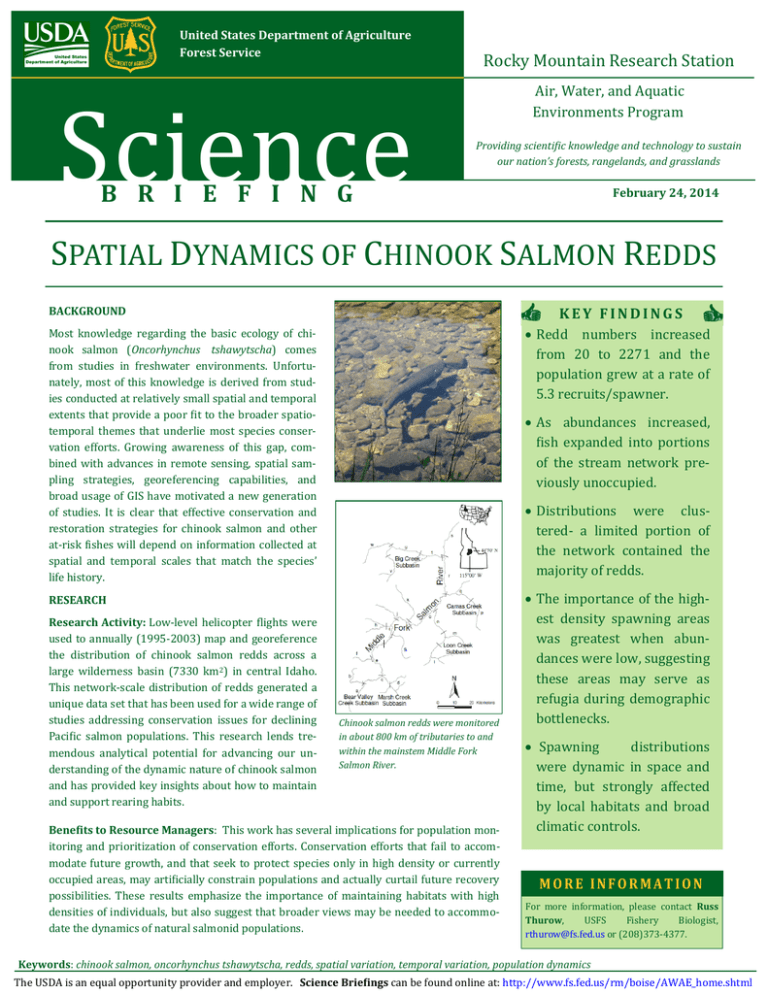
United States Department of Agriculture Forest Service Science Rocky Mountain Research Station Air, Water, and Aquatic Environments Program Providing scientific knowledge and technology to sustain our nation’s forests, rangelands, and grasslands B R I E F I N G February 24, 2014 SPATIAL DYNAMICS OF CHINOOK SALMON REDDS BACKGROUND KEY FINDINGS Redd numbers increased from 20 to 2271 and the population grew at a rate of 5.3 recruits/spawner. Most knowledge regarding the basic ecology of chinook salmon (Oncorhynchus tshawytscha) comes from studies in freshwater environments. Unfortunately, most of this knowledge is derived from studies conducted at relatively small spatial and temporal extents that provide a poor fit to the broader spatiotemporal themes that underlie most species conservation efforts. Growing awareness of this gap, combined with advances in remote sensing, spatial sampling strategies, georeferencing capabilities, and broad usage of GIS have motivated a new generation of studies. It is clear that effective conservation and restoration strategies for chinook salmon and other at-risk fishes will depend on information collected at spatial and temporal scales that match the species’ life history. As abundances increased, fish expanded into portions of the stream network previously unoccupied. Distributions were clustered- a limited portion of the network contained the majority of redds. RESEARCH Research Activity: Low-level helicopter flights were used to annually (1995-2003) map and georeference the distribution of chinook salmon redds across a large wilderness basin (7330 km2) in central Idaho. This network-scale distribution of redds generated a unique data set that has been used for a wide range of studies addressing conservation issues for declining Pacific salmon populations. This research lends tremendous analytical potential for advancing our understanding of the dynamic nature of chinook salmon and has provided key insights about how to maintain and support rearing habits. Chinook salmon redds were monitored in about 800 km of tributaries to and within the mainstem Middle Fork Salmon River. Benefits to Resource Managers: This work has several implications for population monitoring and prioritization of conservation efforts. Conservation efforts that fail to accommodate future growth, and that seek to protect species only in high density or currently occupied areas, may artificially constrain populations and actually curtail future recovery possibilities. These results emphasize the importance of maintaining habitats with high densities of individuals, but also suggest that broader views may be needed to accommodate the dynamics of natural salmonid populations. The importance of the highest density spawning areas was greatest when abundances were low, suggesting these areas may serve as refugia during demographic bottlenecks. Spawning distributions were dynamic in space and time, but strongly affected by local habitats and broad climatic controls. MORE INFORMATION For more information, please contact Russ Thurow, USFS Fishery Biologist, rthurow@fs.fed.us or (208)373-4377. Keywords: chinook salmon, oncorhynchus tshawytscha, redds, spatial variation, temporal variation, population dynamics The USDA is an equal opportunity provider and employer. Science Briefings can be found online at: http://www.fs.fed.us/rm/boise/AWAE_home.shtml
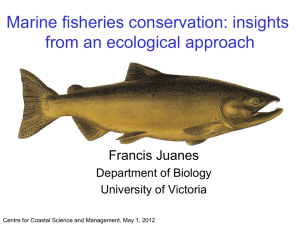



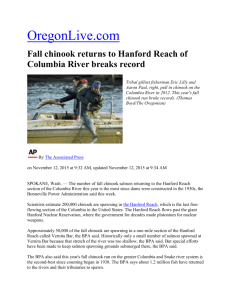

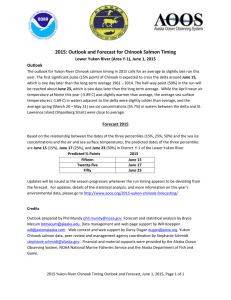

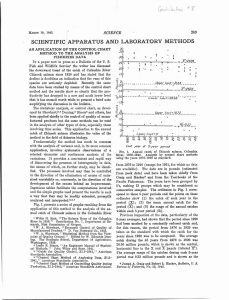
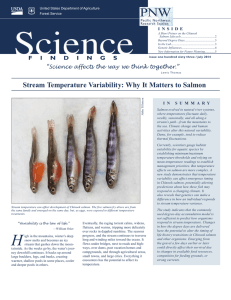
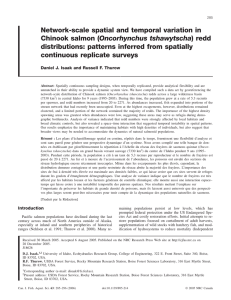
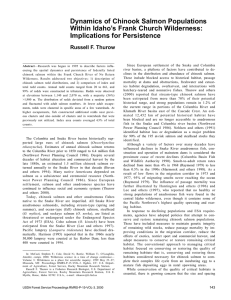
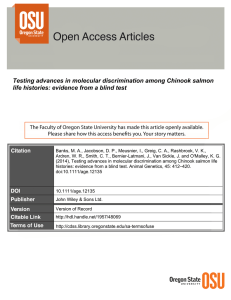
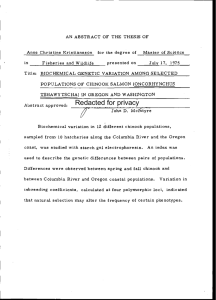
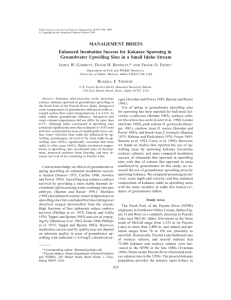
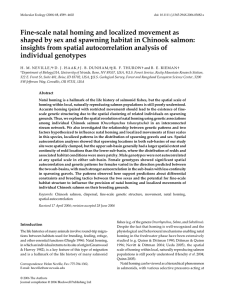
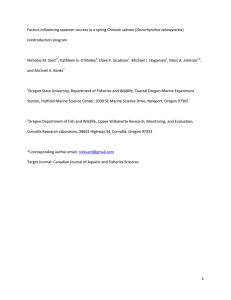
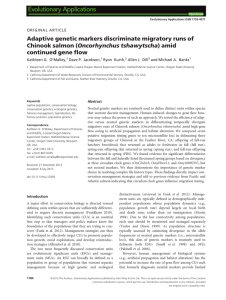
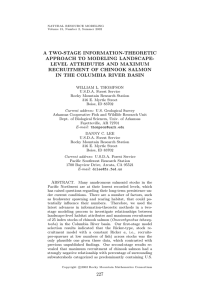
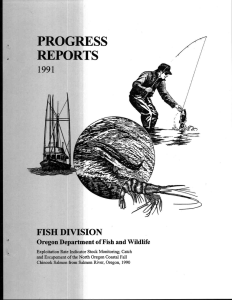
![This article was downloaded by: [National Forest Service Library]](http://s2.studylib.net/store/data/011898240_1-a19e755a716fc8be05787b2fdbfcb754-300x300.png)
![This article was downloaded by: [Oregon State University]](http://s2.studylib.net/store/data/011242361_1-32492d4a7e39447c570edb7837a04514-300x300.png)